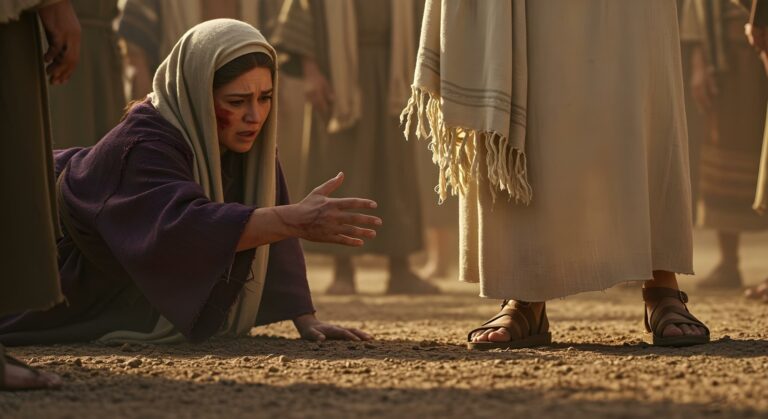When the gospels and Acts are seen as eyewitness testimony, they gain a lot of credibility in the eyes of nonbelievers which makes it all the more easier for us as followers of Christ to tell them about Jesus and the offer of salvation by placing their trust in him. In my last post, I’ve talked about the principle of embarrassment as evidence of the gospels being reliable eyewitness testimony. There is another way to tell if an historical document is generally reliable and that is when it has numerous, verified details within the text.
Suppose someone wrote a book describing your hometown as it was in 1950. In this book, the author correctly identifies the local industry, the laws and penal codes, the town’s roads and geography, the politicians of that time, local houses of worship, town statues and sculptures, area hotels, the depth of the water in the town harbor and numerous other unique details about your town of that year. Here’s a question to ponder over: If this author claimed he had visited your town that year, or at least said he had gotten information from people who lived in that town, would you think he was telling the truth? Of course, because he provides details only an eyewitness could provide. That’s the type of testimony we have in Acts and John.
Luke, Paul’s physician and companion, wrote the Gospel of Luke and the book of Acts. In addition, Luke was an eyewitness of many of the things that happened in Acts. In the second half of that work, Luke displays an incredible array of knowledge of local places, environmental conditions, names, customs, and other circumstances that make sense only if he was an eyewitness or had access to eyewitness testimony. In his work, The Book of Acts in the Setting of Hellenistic History, the classical scholar and historian Colin Hemer combs through the second half of Acts and sorts out incredible historical details that are confirmed by epigraphical, paleographical, archeological, and historical evidence from the first century. Hemer was able to find up to 84 facts in the last 16 chapters of Acts. Let’s look at some of the details Luke drops in Acts that are confirmed by outside testimony:
- The correct language spoken in Lystra, which is Lycaonian (Acts 14:11)
- The correct order of approach to Derbe and then Lystra from the Cilician Gates (16:1; 15:41)
- The presence of a synagogue in Thessalonica (17:1)
- An alter to an “unknown god” (17:23)
- The proper term for those holding court (19:38)
- The common way to obtain Roman citizenship at this time (22:28)
- The best shipping lanes at the time (27:5)
- The right route to sail, in view of the winds (27:12)
- The precise place and name of this island (27:16)
- The local people and the superstitions of the day (28:4-6)
Roman historian A.N. Sherwin-White has stated:
“For Acts the confirmation of historicity is overwhelming…Any attempt to reject its basic historicity must now appear absurd. Roman historians have long taken it for granted.” 1
The classical scholar and archaeologist Sir William Ramsey has said:
“Luke’s history is unsurpassed in respect of its trustworthiness…Luke is an historian of the first rank…He should be placed along with the very greatest of historians.” 2
If Luke is this accurate with Acts, could he not also be trusted when it comes to his own gospel that he authored? I don’t see why not. And if Luke can be trusted to give accurate information in his own gospel, then Matthew and Mark can be trusted for accuracy as well because they tell the same basic story.
What about the Gospel of John? Is it reliable? On the face of it, the author has inserted himself into the gospel as “the disciple” or “the beloved disciple” and so in effect the author is claiming to be an eyewitness of the events of Jesus. Could we find the same kind of details in John that we find in Acts? Like the work Colin Hemer did in Acts, the New Testament and Johanine scholar, Craig Blomberg has set out to do just that in his book, The Historical Reliability of John’s Gospel where he examines John’s Gospel verse by verse and identifies numerous historical details. In all, he has identified 59 details in the Gospel of John that have been confirmed by literary works and archaeology or are historically probable. The events John describes in his gospel are restricted to Israel so it doesn’t contain quite as many geographical, topographical, and political items as the book of Acts. Despite the limitation, there is a remarkable amount of details that either confirmed by outside sources or are historically probable given that early Christians would most likely not invent them. Here I’ll list a small sample to give you an idea of how reliable John’s gospel is when looked at in depth:
- Archaeology confirms the use of stone water jars in New Testament times (John 2:6)
- Given the early Christian tendency towards asceticism, the wine miracle is an unlikely invention (2:8)
- Josephus (War of the Jews 2.232) confirms there was significant hostility between Jews and Samaritans during Jesus’ time (4:9)
- Jesus’ own testimony being invalid without the Father is an unlikely invention (5:31); a later redactor would be eager to highlight Jesus’ divinity and would probably make his witness self-authenticating.
- Archeology confirms the existence and location of the Pool of Siloam (9:7)
When we couple John’s knowledge of Jesus’ personal conversations with these nearly sixty historically confirmed/historically probable details, could there be any reasonable doubt that John was an eyewitness or at least had access to eyewitness testimony?



